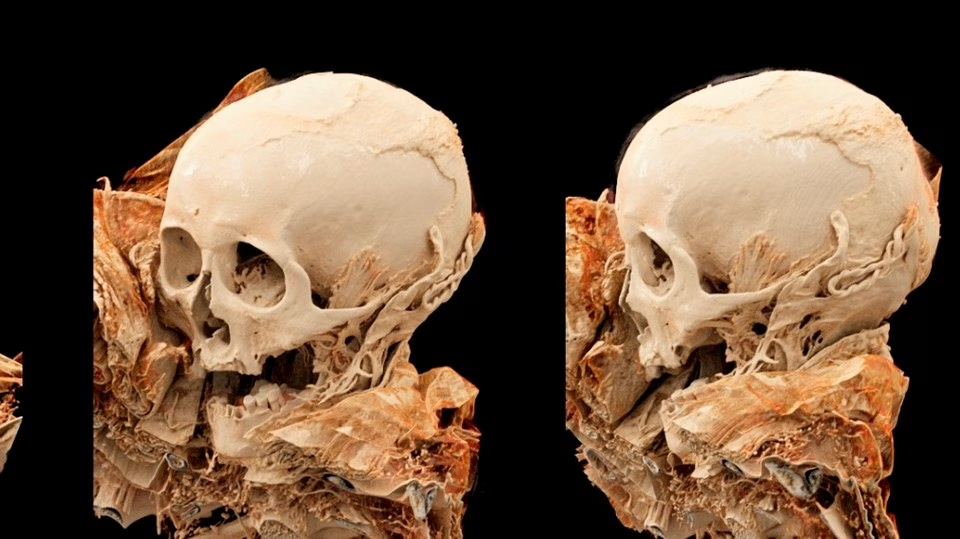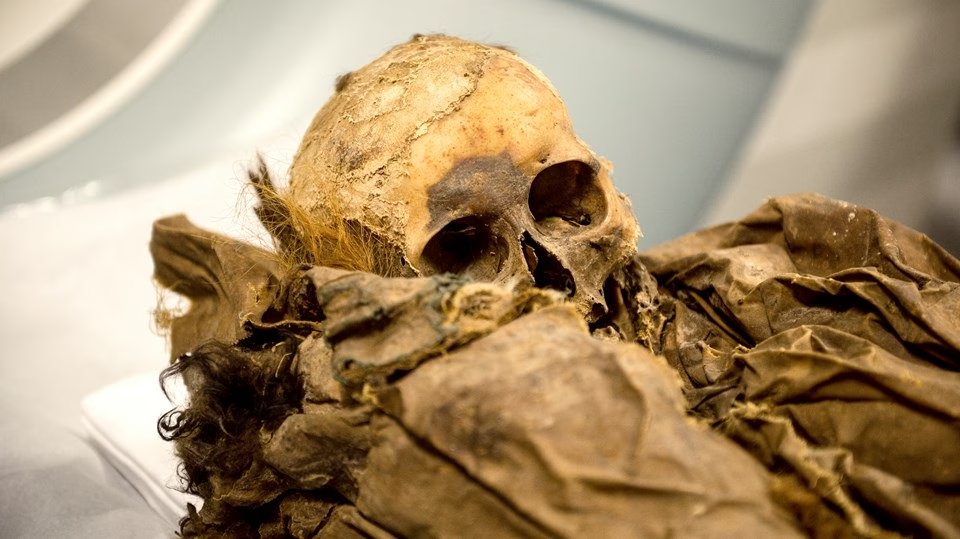In 2018, a detailed forensic scan conducted at Aarhus University in Denmark revealed a remarkably well-preserved 14th-century Mongolian warrior mummy. Now on display at the Moesgaard Museum, this archaeological find offers fascinating insights into the daily life, health, and cultural practices of a mounted soldier during the final days of the Mongol Empire.
What Did the Scans Reveal?
The scans confirmed that the mummy is a young adult male. The shape of the pelvis, jaw angle, and muscular attachments all pointed clearly to his gender. The skeleton shows no signs of trauma or healed fractures, indicating a generally healthy life. However, there is advanced degeneration in the lower spine—specifically in the lumbar discs—suggesting chronic lower back pain, likely caused by long periods spent on horseback.
Exceptionally Preserved Remains
The mummy is exceptionally well-preserved, with intact skin, hair, tendons, muscles, internal organs, and skeleton. This rare state of preservation has allowed scientists to analyze his body in detail and reconstruct various aspects of his life. His hairstyle—with braided loops behind each ear—matches traditional Mongol styles from the time of Genghis Khan.

Dental Damage and Liquid Diet
Only six teeth remain in the warrior’s mouth. The heavy wear on the tooth surfaces indicates a lifetime of consuming coarse foods, or possibly using teeth as tools—for example, during leather work. The extent of tooth loss and evidence of periodontal disease suggest that, in his final years, the warrior likely relied on a liquid diet.
Clothing and Footwear Reflect a Rider’s Life
The Mongolian warrior was dressed in silk garments dyed blue with indigo, and he wore leather boots lined with felt. The boots featured an upturned toe and extended over the knee, typical of Mongolian riding boots. His foot length—20.56 cm—corresponds to a European shoe size 35.
Radiocarbon Dating and Timeline
Radiocarbon (C-14) analysis of both a femur sample and his clothing points to two possible timeframes: 1320–1350 AD or 1390–1430 AD. Based on cultural and historical context, the earlier range is considered more likely. This period falls within the late Mongol Empire, when shamanistic traditions were still dominant in the Altai region.

Burial Practices and Spiritual Beliefs
The warrior was buried with his complete riding equipment, along with a small felt spirit doll, known as an “ongon.” These were believed to offer protection on long journeys. This spiritual item suggests the warrior was a traveler—possibly a soldier engaged in campaigns during a time of continuous conflict among khanates.
Marine Food in a Landlocked Culture?
Isotope analysis revealed traces of marine or freshwater-based foods in the warrior’s diet. This suggests that he may have carried dried fish or seaweed—common items sourced from Mongolia’s large lakes—during his travels. Such details provide rare glimpses into medieval Mongol dietary habits and trade networks.

Global Research Relevance
Dr. Chiara Villa of the University of Copenhagen is comparing the scan results with mummies from regions like Korea, Argentina, Italy, and Egypt. Her goal is to identify skeletal changes caused by occupation or lifestyle across cultures and eras—such as the historical prevalence of atherosclerosis or riding-induced spinal wear.
The remarkably well-preserved Mongolian warrior mummy displayed at Moesgaard Museum, showcasing 14th-century burial customs and the lifestyle of the Mongol Empire. Photo: Moesgaard Museum




